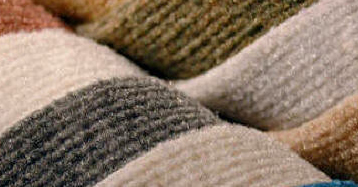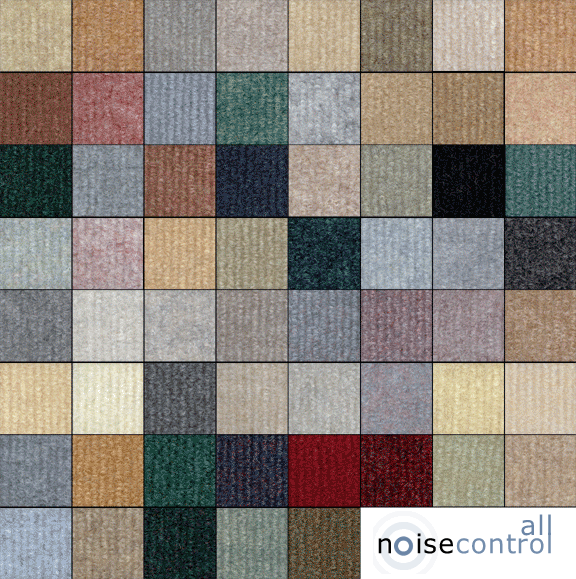Acoustic Fabrics, an Aesthetic Addition to Controlling Commercial Noise
Acoustic fabrics are simply versatile, easy to retrofit, cost-effective with outstanding noise absorption qualities

Our acoustic fabrics can be wrapped on acoustic board and other panel materials like other fabrics you may find in the acoustic market. However, ours is developed to also uniquely be fitted to any solid wall and still achieve outstanding NRC values.
The clear advantages of ANC acoustic fabric are its simple to ease, installation, and ability to retrofit in virtually any existing commercial space as well as it is inexpensive. Where speech intelligibility is critical, this fabric is an excellent choice for any conference room, classroom, commercial, or office space.

ANC acoustic fabrics offer unmatched fade resistance and will offer a lifetime of acoustical benefits.
Call us today at 561-585-4703 for details and ordering information.
Benefits & Features
An outstanding noise absorption material ANC acoustic fabric is:
An Aesthetic Dimensional fabric
Offers Unmatched Fade Resistance
Is Fire/Smoke Retardant
Class A/ASTM E-84
Lightweight: 23 oz./ lin. yd.
Durable, Composed of Fossfibreâ„¢ 100% Solution Dyed Polyester
Backing Made of Fusible Clear Latex
November 29, 2007
All Noise Control
6802 Lake Worth Rd 323
Lake Worth, FL 33467
RE: INSTALLATION OF SOUND CHANNELS-2 ACOUSTICAL FABRIC
The attached installation instructions and guidelines should be thoroughly reviewed before installing this product.
The appearance of the finished installation will depend on several factors. A few that should be mentioned are whether or not the installation instructions were followed; the condition of the wall surface to which the fabric is applied; the type of adhesive that was used and the lighting in the room.
It is very important to follow the installation instructions closely in order to insure a satisfactory appearance of the finished wall.
We hope you find this information helpful. Best Regards,
All Noise Control
________________________________________________________________________________________________________________________________________________
MAINTENANCE AND CLEANING
Structured acoustical wall covering, made with face fibers of Polyester, will stay attractive and serviceable with regular vacuuming. Most spots and stains will disappear when treated with a mild detergent or cleaning solvent.
MATERIAL
Carefully inspect all shipments. Check and examine material. We cannot be responsible for any imperfections after goods are cut. Before cutting, be sure the pattern and color and satisfactory. Purchaser assumes all responsibility for goods after cutting. No claims will be allowed for labor. All returns must have a prior Return Authorization Number and are subject to a 25% restocking charge. All requests for returns must be made within thirty (30) days of the ship date.
WALLS
Walls are to be structurally sound and free of dirt, grease, and markings. All markings which cannot easily be removed should be sealed so that ”bleeding” through the wall covering shall not occur. Although it is not necessary for the installation of wall carpet, sealed walls, especially on newly installed drywall, could facilitate future removal of wall covering and lessen damage to walls.
INSTALLATION
Cut material to desired lengths, allowing for top and bottom trimming. Apply a premixed heavy-duty adhesive directly to the wall, allowing it to dry to its maximum stackability without it being overly dry. (IMPORTANT!!! ADHESIVE IS READY MIXED AND SHOULD BE USED AS IT COMES OUT OF THE CAN. DO NOT MIX WITH WATER AND DO NOT PASTE THE BACK OF THE WALLCOVERING). This material is not factory trimmed. It is necessary for the paper hanger to cut a straight edge. All edges must be butt joined. WALL CARPET SHOU LD BE HUNG STRAIGHT UP…DO NOT
ALTERNATELY REVERSE STRIPS…Apply a second coat of undiluted adhesive to the wall, allowing it to dry to its maximum tack ability without it being overly dry. Be careful not to get adhesive onto the face of the wall covering, as it cannot readily be removed. Should adhesive get onto the face, it is best to allow it to dry and flake it off with a stiff brush. Do not attempt to wash affected areas, as this will only serve to dilute the adhesive and spread it over a wider area Install three strips and inspect all for color, uniformity, and correctness of the application. If satisfactory, proceed with work as work proceeds, small areas (3 strips) should be inspected so that there are no more than 3 strips in question at any time. If anything goes wrong, STOP WORK IMMEDIATELY and contact your nearest representative for inspection. All seams shall be vertical and only full widths of material should be applied for the most satisfactory installation. Headers over doors may cause shading. All seams shall be at least 6 inches away from inside or outside comers.
The adhesive should have a low water base and be dry clear or translucent. The room temperature should remain stable at about 65 degrees F- 85 degrees F and be well ventilated before, during, and up to 72 hours of the installation. High humidity will extend curing time and may cause Sound Channels to ruffle. Apply adhesive with a 1/16” v-notched trowel at a 45-degree angle. Allow adhesive to tack up before applying the Sound Channels. Roll out Sound Channels with a 1/4” roller. Trim edges with wall covering back cutter or under cutter to the true pattern repeat. You may want to tack a few small nails or staples at the top of the fabric to prevent any sliding.
For best results, it is recommended that a qualified textile installer be employed.
Guide to Cleaning Sound Channels 2 Acoustical Fabrics
1brough installation procedures, or consumer use, the fabric may become contaminated and require spot cleaning from time to time. The following information is provided as a guideline for the care and cleaning of acoustical fabric made from Polyester fibers. Because this material is made from synthetic fibers, it cleans very well with virtually no damage to the color or construction itself. Most commercially available Carpet and Upholstery cleaners will do an excellent job removing stains. From time to time, additional cleaning methods may need to be employed to remove stubborn or difficult stains.
General
As with any stain or contamination, the quick response is the best, especially when done in conjunction with the proper cleaner for the type of stain. Important: make sure you have selected the right cleaning agent from the list below before you begin the cleaning process. The categories of stains listed below are based on
1) Stains acquired during OEM manufacture and 2) acquired by consumer/end-user following the installation of
Fabric.
OEM Fabrication Incidents: Type o(Stain
Oil
Adhesive (water-based) Adhesive (solvent-based) Felt Tip Marker (indelible) Ink (ballpoint indelible) Pencil (graphite lead) Chalk
Paint (latex)
Paint (oil) Stains (latex) Stains (oil)
Tar/Asphalt K-1
Cleaning Agent
High strength detergent detergent
mineral spirits detergent
dry clean
detergent detergent
high strength detergent
Solvents/mineral spirits high strength detergent solvents/mineral spirits
Kerosene/solvents
How to Remove
Soak-blot dry
Scrub-rinse-blot dry soak-blot dry
Scrub-rinse-blot dry
Solvent soak-blot dry scrub-rinse-blot dry scrub-rinse-blot dry scrub-rinse-blot dry soak-blot dry
Scrub-rinse-blot dry
Soak-blot dry soak-blot dry
Note: In many cases listed above, repeated steps may be required to fully extract the contaminant from the material. Use solvent-type cleaners in a well-ventilated area.
Note: Always check to see that the cleaner will not cause damage to material or fabric, by testing on a small area out of sight.
Consumer/End User Incidents:
Tvpe o(Stain Cleaning Agent
How to Remove
Mustard Ketchup* Coffee* Chocolate* Tea*
Chewing Gum Oil high strength Grease Tar/Asphalt
Wax
Rust Dirt* Lipstick Nail Polish
Shoe Polish Crayon Vomit* Urine* Blood*
Excrement*
dry clean solvent
high strength detergent high strength detergent detergent
high strength detergent dry clean solvent detergent
High strength detergent/ degreaser
K-1 kerosene/thinner detergent
Rust remover detergent
Dry clean solvent dry clean solvent dry clean solvent
High strength detergent
High strength detergent high strength detergent high strength detergent
High strength detergent
Scrub-soak-blot dry scrub-rinse-blot dry scrub-rinse-blot dry scrub-rinse-blot dry. Scrub-rinse-blot dry scrub-soak-blot dry scrub-soak-blot dry scrub-soak-blot dry scrub-soak-blot dry
Hot iron-on detergent-soaked towel or cloth
Soak-rinse-blot dry scrub-rinse-blot dry soak-blot dry
Soak-blot dry soak-blot dry
Scrub-rinse-blot dry
Scrub-rinse-blot dry-deodorize with vinegar scrub-rinse-blot dry-deodorize with vinegar scrub-rinse-blot dry
Scrub-rinse-blot dry-deodorize with vinegar
Note: In many cases listed above, repeated steps may be required to fully extract contaminants from the material. Items listed above with(*) may also be removed through the steam extraction method by a professional cleaner or service.
Note: Always check to see that the cleaner used will not cause damage to the material or fabric, by testing on an area out of sight.
Important: The recommendations made above are done in good faith and are based on a history of actual experiences and laboratory evaluations. Acoustics First Corporation does not warrant, either expressed or implied, the effectiveness of the cleaning agents listed and the process for cleaning, described above.